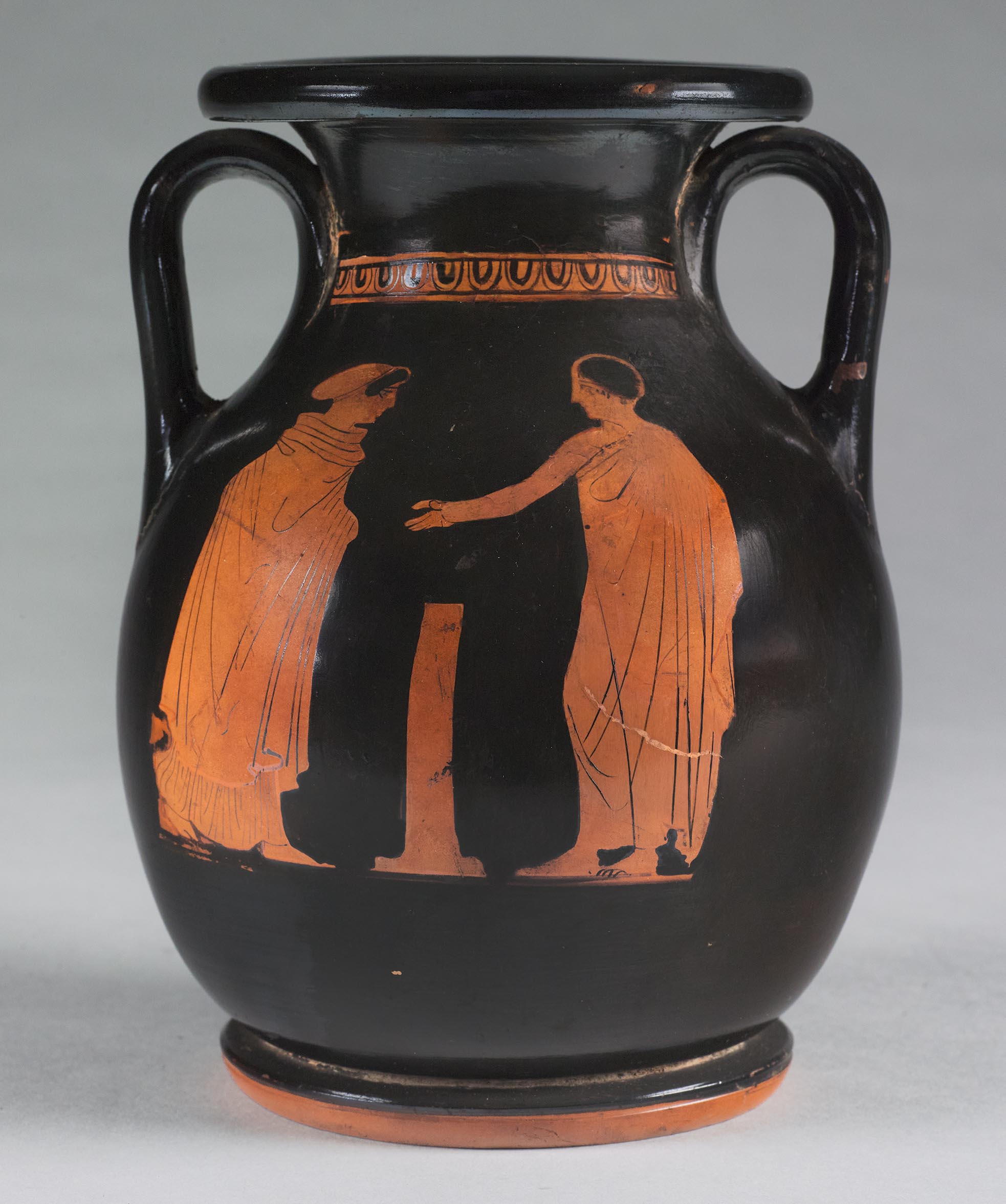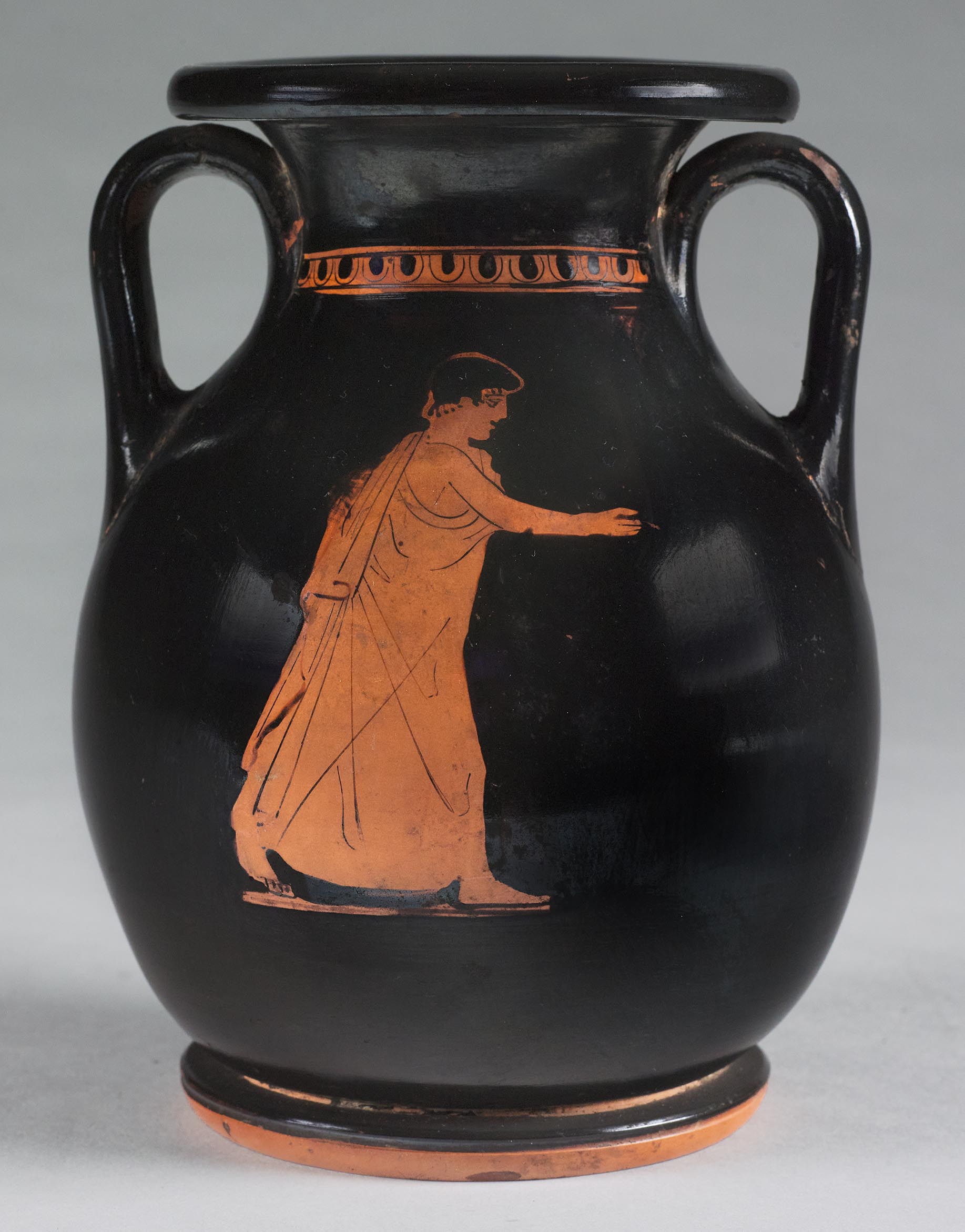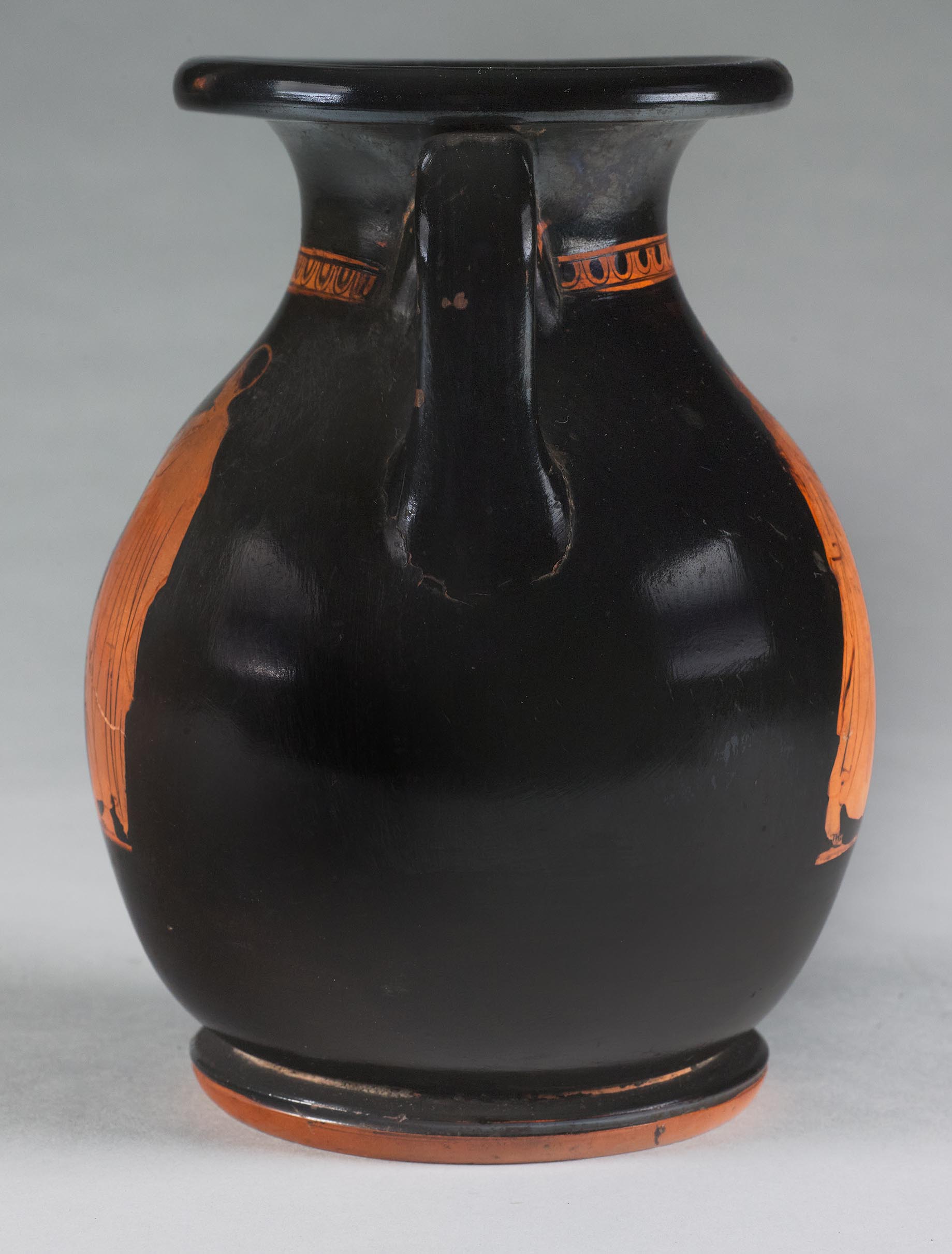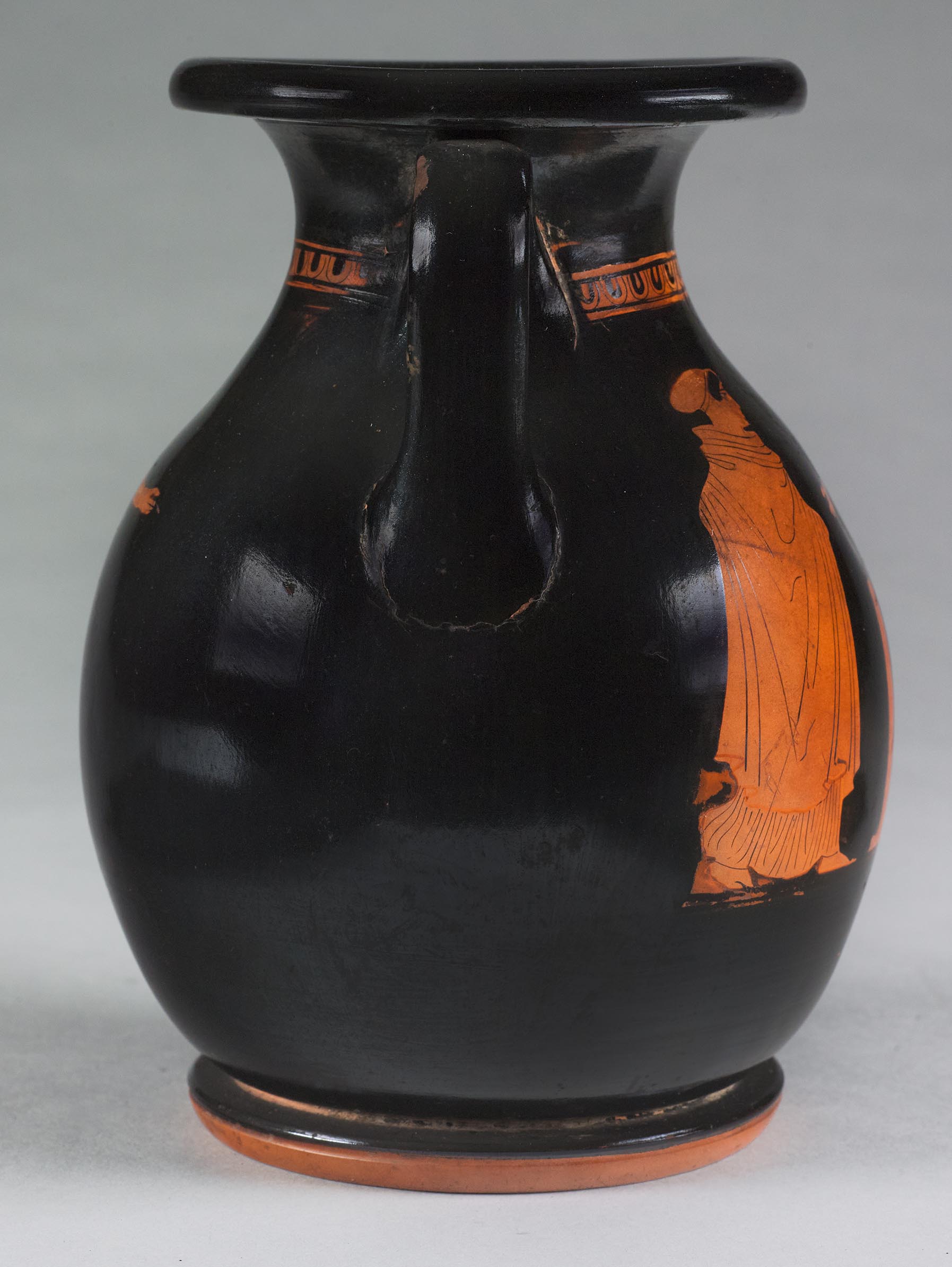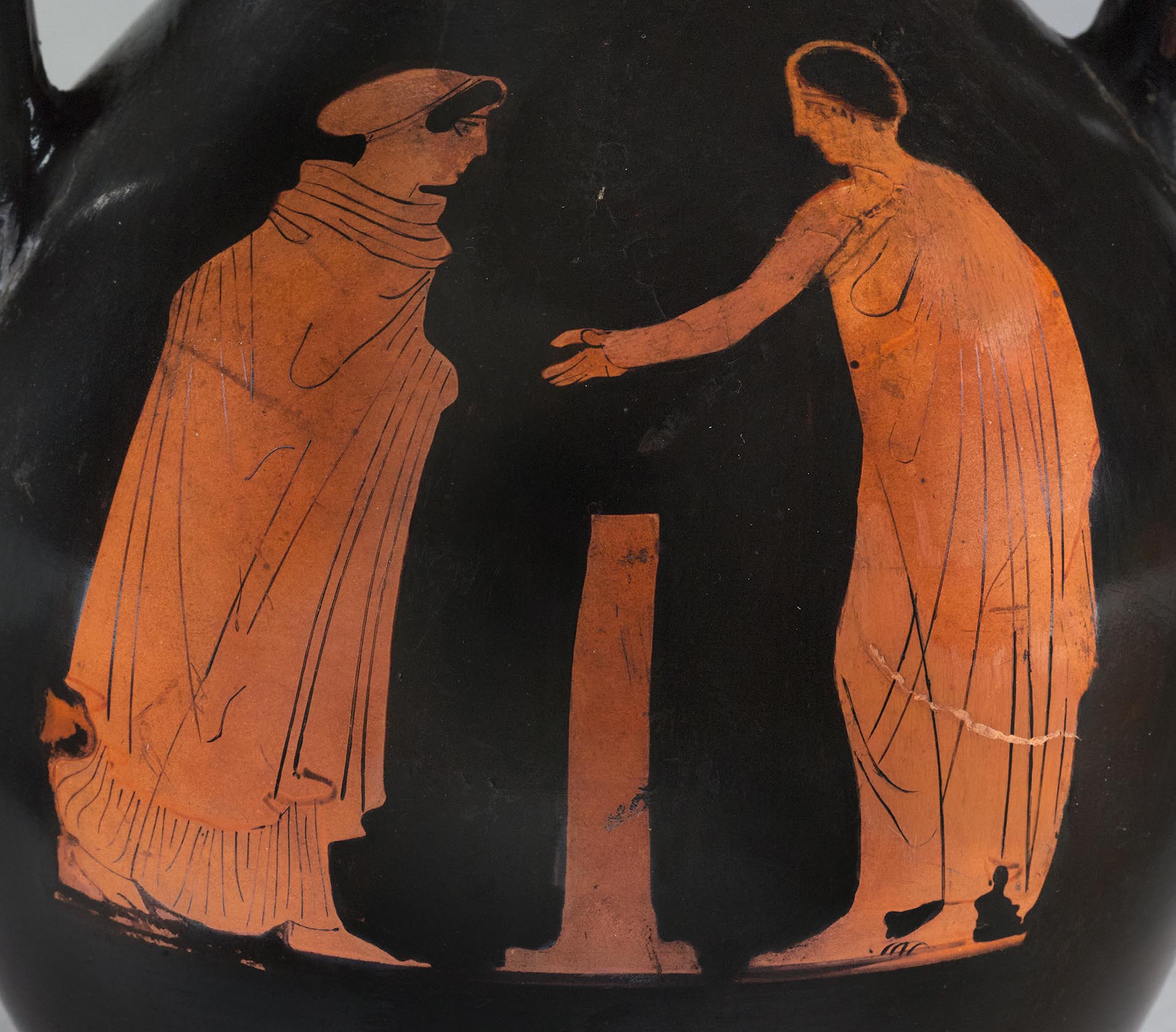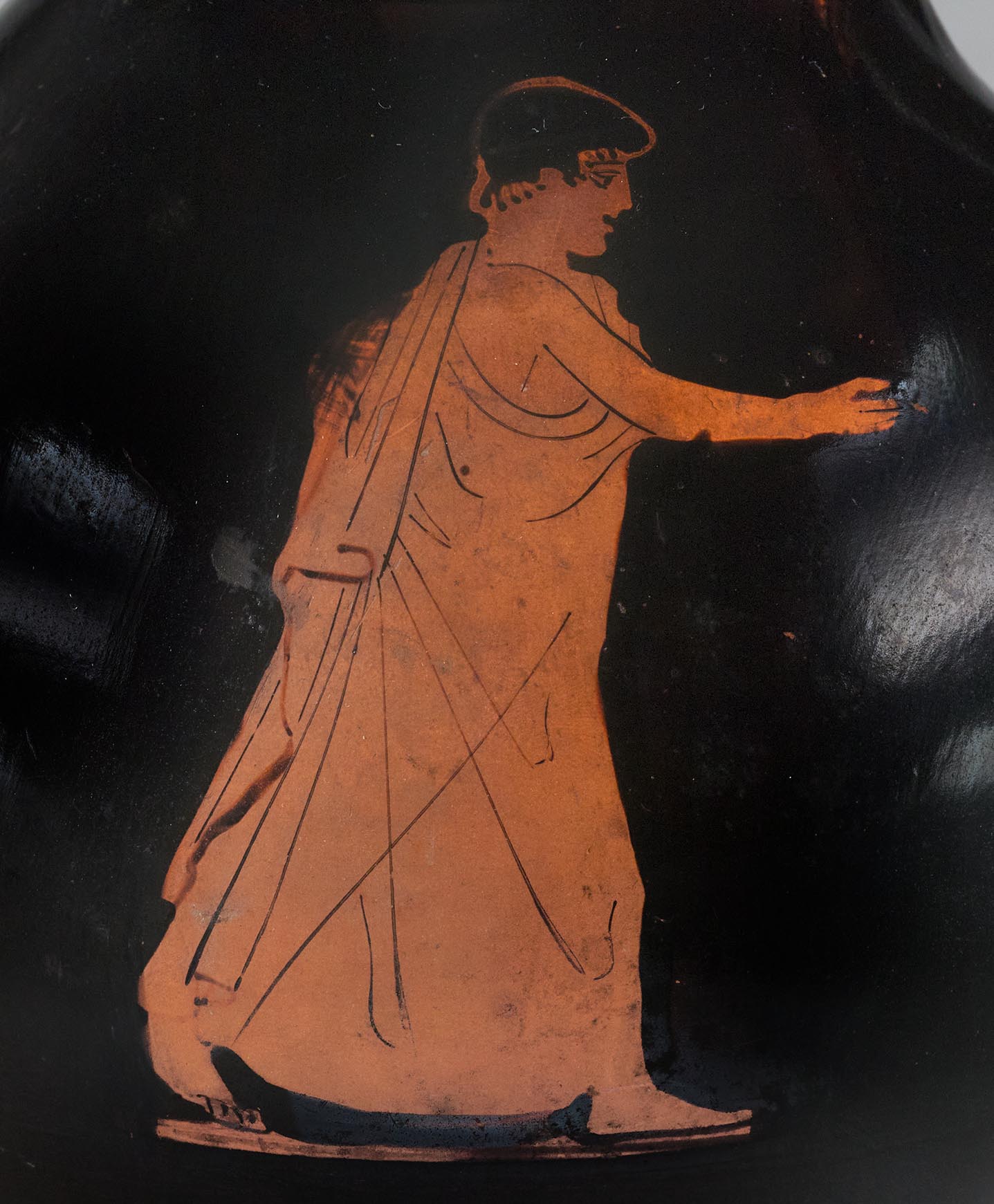Provenance
1999, gift, Mr. and Mrs. Ewald Mayer to Princeton University.
Shape and Ornament
Torus rim, black. Flaring neck. Interior of mouth and neck black. Strap handles, black, thicker in middle. Ovoid body, separated from foot by reserved fillet; interior of body streaky, matte black. Disk foot with groove near upper edge. Top of foot and side above groove black; side below groove and underside reserved. Band of ovolo, framed by paired horizontal lines, extends between the upper handle roots. Figure panels are unframed. Short reserved groundlines, nearly effaced on side B by a careless brushstroke.
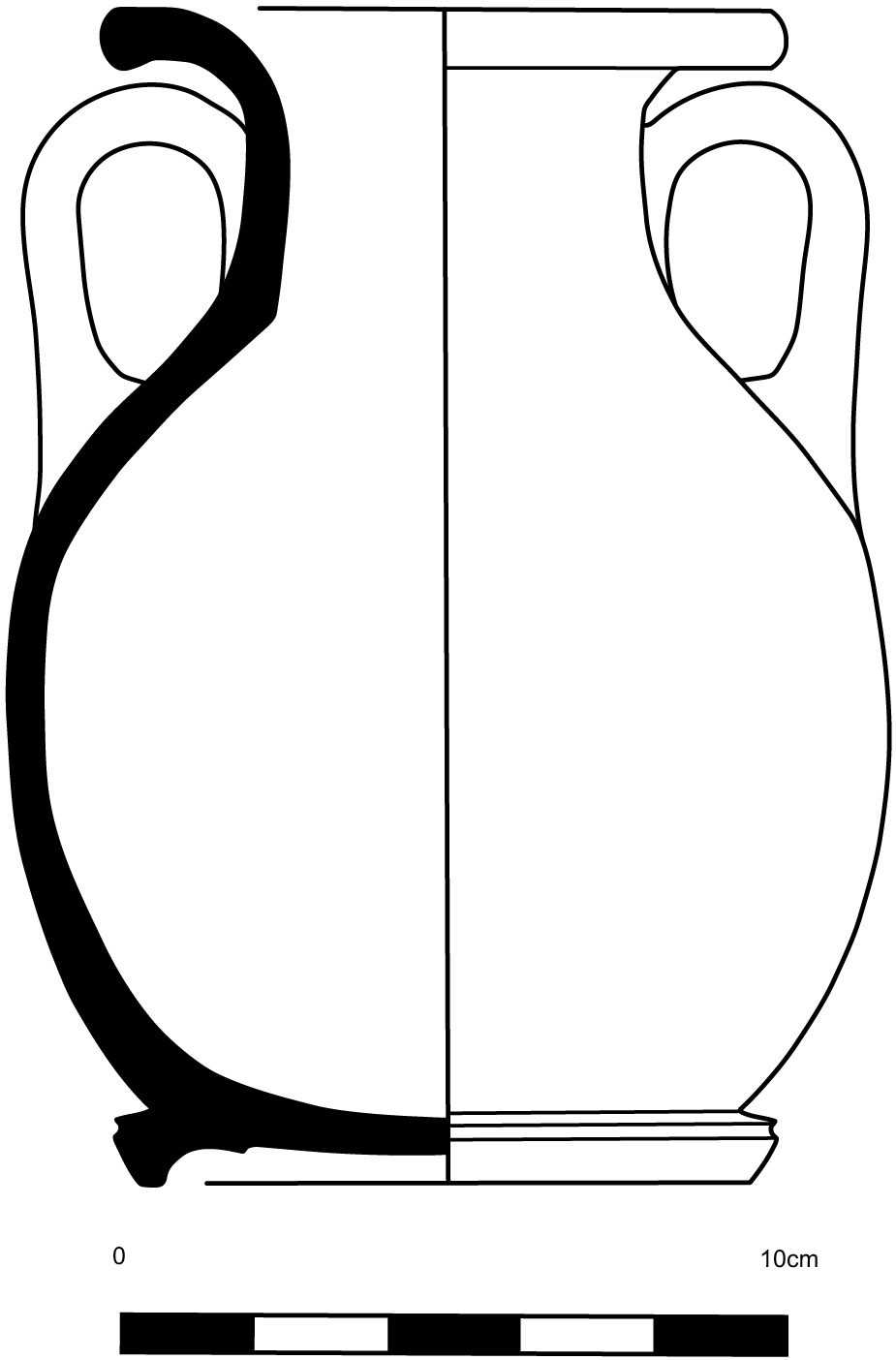
Subject
A. Male youth and woman. At right, a male youth stands facing left, barefoot and wearing a himation. His right leg is advanced, the knee bent. He extends his right arm toward a woman, who steps toward him from the left. She is barefoot, her arms and body enveloped in a himation over an ankle-length chiton, its sway accentuating her movement. Her hair is bound in a sakkos but emerges above her brow. Between the figures is a short post or altar on a low base.
B. Striding male youth. A youth strides purposefully toward the right, his left leg advanced. He is barefoot and wears a himation. The white fillet in his short hair is now nearly invisible. He extends his right arm forward, holding in his hand a small object, perhaps a now-faded white egg, ball, or fruit.
Attribution and Date
Attributed to the Hasselmann Painter [A. Lezzi-Hafter]. Circa 430–420 BCE.
Dimensions and Condition
h. 17.7 cm; w. 13.4 cm; diam. of mouth 10.4 cm; diam. of foot 9.9 cm. Minor chipping of the black gloss on the handles, rim, and inner neck, the latter retaining significant incrustation. On side A, a noticeable dent in the clay body between the figures, and a scrape across the man’s legs. Repainting of the youth’s neck and left shoulder, and the adjacent background up to the right end of the ovolo. The lower rear edge of the woman’s himation has been damaged, as have sections of the post. On side B, the face, neck, and upper shoulder of the youth have suffered from mottled discoloration. The groundline on side A is poorly preserved. On the base, a faint modern inscription in ink is not legible; another ink inscription reads “2989, PR 120, HO[or Q?].”
Technical Features
No relief contours. Shiny black gloss, slightly iridescent. Accessory color. White: youth’s fillet and egg on side B.
Bibliography
Abbreviation: Princeton RecordRecord of the Princeton University Art Museum. (1942– ). 59, nos. 1–2 (2000): 91 [not illus.].
Comparanda
For the Hasselmann Painter, see Abbreviation: ARV2J. D. Beazley. Attic Red-Figure Vase-Painters. 2nd ed. Oxford, 1963 1135–40, 1684; Abbreviation: ParalipomenaJ. D. Beazley. Paralipomena: Additions to Attic Black-Figure Vase-Painters and to Attic Red-Figure Vase-Painters. Oxford, 1971 454–55, 517; Abbreviation: BAdd2Carpenter, T. H., ed. 1989. Beazley Addenda: Additional References to ABV, ARV2, and Paralipomena. 2nd ed. Oxford: Published for the British Academy by Oxford University Press. 333. Beazley said he was near the Washing Painter, and he certainly shared potters and themes with that artist and others in his workshop. With side A, cf., by the Hasselmann Painter, the youth and woman on London 1836,0224.198 (Abbreviation: ARV2J. D. Beazley. Attic Red-Figure Vase-Painters. 2nd ed. Oxford, 1963 1138.41; Abbreviation: BAPDBeazley Archive Pottery Database. http://www.beazley.ox.ac.uk 215078); by the Washing Painter, Taranto 22827 (Abbreviation: ARV2J. D. Beazley. Attic Red-Figure Vase-Painters. 2nd ed. Oxford, 1963 1132.186; Abbreviation: BAPDBeazley Archive Pottery Database. http://www.beazley.ox.ac.uk 214996); by the Washing Painter, Moscow II 1 B 393 (CVA Moscow, Pushkin 4, 16, pl. 11.1–2; Abbreviation: BAPDBeazley Archive Pottery Database. http://www.beazley.ox.ac.uk 24435); by the Painter of London E 395, Madrid 32688 (Abbreviation: ARV2J. D. Beazley. Attic Red-Figure Vase-Painters. 2nd ed. Oxford, 1963 1140.8; Abbreviation: BAPDBeazley Archive Pottery Database. http://www.beazley.ox.ac.uk 215111). Side A may represent a scene of courtship. Women who are the targets of male courtship are often depicted with their mantles drawn up to their chins, leaving only their heads and feet uncovered: see G. Ferrari, Figures of Speech: Men and Maidens in Ancient Greece (Chicago, IL, 2002), 91–93. For heterosexual courtship scenes, see Princeton y978 (Entry 9). Against this interpretation is the inclusion of the short pillar or altar in such scenes, sometimes with one of the pair of figures holding a torch or phiale, implying a ritual context.
The striding youth carrying a small object on side B is among the painter’s stock figures on the backs of small pelikai: e.g., London E 388 (Abbreviation: ARV2J. D. Beazley. Attic Red-Figure Vase-Painters. 2nd ed. Oxford, 1963 1136.2; Abbreviation: BAPDBeazley Archive Pottery Database. http://www.beazley.ox.ac.uk 215039); London E 397 (Abbreviation: ARV2J. D. Beazley. Attic Red-Figure Vase-Painters. 2nd ed. Oxford, 1963 1136.1; Abbreviation: BAPDBeazley Archive Pottery Database. http://www.beazley.ox.ac.uk 215038); Capua 211 (Abbreviation: ARV2J. D. Beazley. Attic Red-Figure Vase-Painters. 2nd ed. Oxford, 1963 1136.12; Abbreviation: BAPDBeazley Archive Pottery Database. http://www.beazley.ox.ac.uk 215049); Capua 212 (Abbreviation: ARV2J. D. Beazley. Attic Red-Figure Vase-Painters. 2nd ed. Oxford, 1963 1136.8; Abbreviation: BAPDBeazley Archive Pottery Database. http://www.beazley.ox.ac.uk 215045). In every case, one notes the single, straight himation fold extending from the left hip to the right foot. Considering her preoccupation, it is unlikely that the woman on side A is the object of the youth’s attention.
